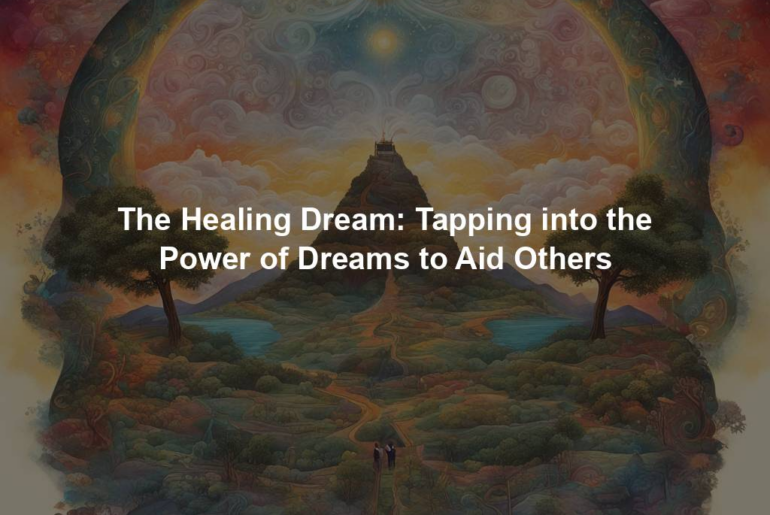As humans, we spend roughly a third of our lives asleep. During this time, our minds delve into the mysterious realm of dreams, where anything becomes possible. Dreams have always fascinated and perplexed us, stirring our curiosity about their meaning and purpose. However, recent research suggests that dreams not only hold personal significance but also possess the potential to aid others in need. This emerging concept of dreams as a healing tool is opening new doors in the field of psychology and spirituality.
The Therapeutic Potential of Dreams
Dreams offer a lens into our subconscious mind, providing valuable insights into our emotions, fears, desires, and unresolved issues. Psychologists have long recognized the therapeutic potential of dream analysis in individual therapy, helping people gain self-awareness and uncover hidden parts of themselves. However, the healing power of dreams goes beyond individual exploration.
A growing number of individuals have reported experiencing dreams that seem to be connected to others’ physical or emotional well-being. These healing dreams have the potential to provide comfort, guidance, or even offer a glimpse of a future event. Such dreams serve as a bridge between worlds, connecting the dreamer and the person in need.
The Connection between Dreams and Healing
Scientists and spiritualists alike have begun exploring the extraordinary connection between dreams and healing, seeking to understand the mechanisms behind these phenomena. One prevailing theory suggests that dreams tap into the collective unconscious, an interconnected realm where information and energies are shared among all beings.
It is believed that in dreams, a person’s consciousness merges with this collective unconscious, allowing them to access information beyond their individual knowledge. From this perspective, healing dreams could be seen as a way for the dreaming mind to tap into this vast collective wisdom and channel it toward someone in need.
How to Harness the Power of Healing Dreams
While dreams with healing potential can occur spontaneously, some techniques and practices can help harness this power more intentionally. One such method is lucid dreaming, in which the dreamer becomes aware that they are dreaming, gaining control over the dream’s narrative. Lucid dreamers can then direct the dream towards the healing process, focusing on healing imagery or mentally sending healing intentions to others.
Another practice that is gaining attention is dream incubation, which involves setting an intention before sleep to have a healing dream or receive guidance on a specific issue. By focusing on the desired outcome just before sleep, individuals may increase the likelihood of experiencing relevant dreams.
The Ethical Considerations
As the concept of healing dreams gains momentum, it is essential to approach their interpretation and application with ethical considerations in mind. The intent behind interpreting and sharing a healing dream should always be to offer support, comfort, and healing energy to others. It is crucial to respect the boundaries and privacy of the individuals involved and maintain a respectful, non-intrusive approach when sharing dream insights.
It is worth noting that dream interpretation should never replace professional medical or psychological assistance. While dreams can provide valuable insights, it is crucial to seek appropriate professional help for serious health issues or mental health concerns.
Unlocking the Potential of Dream Healing
As we continue to explore the vast realm of dreams, their potential to aid others in need becomes increasingly apparent. Whether through offering comfort, guidance, or pointing towards healing pathways, dreams possess a remarkable power that connects us at a deeper, collective level. By tapping into the healing potential of our dreams, we open up new avenues of support and compassion, illustrating the interconnectedness of humanity through the captivating world of dreams.

